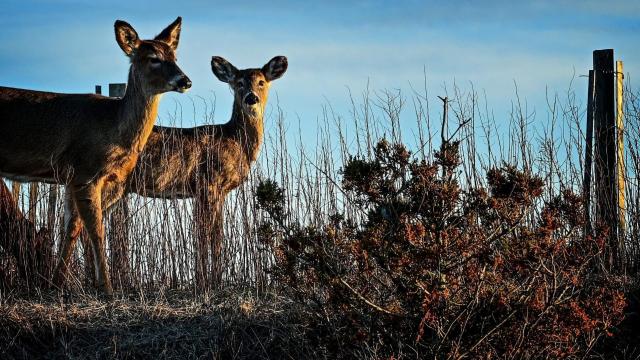The Omicron variant of the coronavirus has found its way into white-tailed deer living in New York, new research released this week has found. The results are the latest to show that deer in the U.S. have become frequent carriers of SARS-CoV-2 — a phenomenon that could have important implications for the future of the virus and our vulnerability to new variants.
Numerous studies have found that deer can readily contract the coronavirus. Last November, for instance, researchers from Penn State University and elsewhere reported that up to a third of free-living and captive deer in Iowa carried traces of the virus from late 2020 to early 2021. Some of these same researchers from Penn State and others, including those with the New York City Department of Parks & Recreation, have released their latest findings this week on the preprint website bioRxiv.
The team tested blood and nasal samples from wild deer living on Staten Island that were temporarily captured as part of a sterilization program to keep the population in check. The samples were collected between December 2021 and January 2022, and the scientists performed antibody and RNA tests on them.
Overall, 14.5% of 131 deer that had their blood taken tested positive for antibodies to the coronavirus, indicating a prior infection. About 10% of the 68 deer that had nasal swabs taken tested positive for an acute infection. And when the researchers sequenced the genetics of these positive samples, they found that some had caught the Omicron variant, the most transmissible version of the coronavirus to emerge yet.
The Omicron found in these deer bore a close genetic resemblance to Omicron strains found in human residents of the city, all but confirming that humans had somehow been the source of the deer infections. It’s unclear how this is happening, but direct contact via hand-feeding or through exposure to contaminated wastewater or trash are possibilities. Interestingly, at least one infected deer had both an active infection and very high antibody levels, possibly indicating that it had been reinfected.
This work, the researchers say in their paper, clearly shows that Omicron “can infect white-tailed deer and highlights an urgent need for comprehensive surveillance of susceptible animal species to identify ecological transmission networks and better assess the potential risks of spillback to humans.”
Deer, at least in the lab with older strains of the virus, don’t appear to experience much if any illness from their infections, unlike other animals such as minks. But the widespread transmission of the virus seen in these animals doesn’t bode well for several reasons. The virus could mutate to become a serious health problem for deer in the U.S., which would only add to the list of infectious diseases circulating in these animals. The virus could also mutate in unpredictable ways or recombine with other coronaviruses in deer that would allow it to become more immune-evading or virulent once it’s transmitted back to humans.
None of this is certain, of course, and there’s plenty of coronavirus already circulating and mutating in humans. But one reason why diseases like influenza are considered a pandemic threat is that flu viruses are constantly being spread back and forth between different species. Every once in a while, the genetic shuffling that this process produces can spit out a version of the flu that’s both highly contagious in humans and much more deadly than the typical seasonal flu. So if the same thing can happen with SARS-CoV-2, it’s a risk that we have to keep an eye on as much as possible, the researchers say.
“The circulation of the virus in deer provides opportunities for it to adapt and evolve,” study author Vivek Kapur, a veterinary microbiologist at Penn State University, told the New York Times. “And it’s likely to come back and haunt us in the future.”
